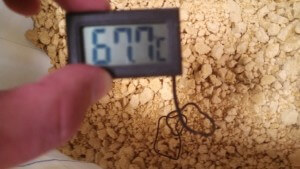Control Your Process, Control Your Temperature

I recently participated in an extrusion short course at Texas A&M University. Insta-Pro International regularly gives presentations and performs equipment demonstrations at Texas A&M.
While the course focuses on principles of extrusion, along with discussions and demonstrations of applications for making extruded products, one recurring theme throughout the week-long event is quality. It’s appropriate that all of these concepts are discussed together because it is a requirement to understand the principles of how everything works in order to control your process. With this knowledge and process controls, consistent and quality products can be made time and time again.
With extrusion, temperature is one of these important process control variables. It’s not an overstatement to say that changing the temperature at the extruder and elsewhere will result in the production of an entirely different product.
For example, soybeans contain cell walls that must be ruptured to liberate protein, oil, and other nutrients. In addition, raw soy contains potent antinutrients that interfere with digestion in the intestine. Extrusion is a common method to rupture cell walls and deactivate antinutrients, and this effect is temperature dependent (see Table 3 for effects of extruder temperature on trypsin inhibitors, one class of antinutritional factor).
Since antinutritional factors interfere with the digestive process, and digestion and absorption of nutrients is critical to maximize growth and development, it shouldn’t be surprising that livestock performance is enhanced when soy products are extruded at optimal temperatures (see here and here).
However, we’re not through at the point of extrusion – all extruded products must be properly cooled before storage. Temperature along the entire processing line is important.
Lastly, how do you know that your thermometer is giving you accurate information – especially after months or years of use? All temperature-recording devices should be calibrated on a regular basis, and these calibrations should be documented. Calibrating just means using the thermometer to measure the temperature of known standards, such as boiling and ice water. I worked in one place where these types of calibrations were performed weekly because temperature was such an important aspect of quality control testing on the production line.
In conclusion, learning environments like the short course held at Texas A&M are great opportunities for seasoned processors and for those who have never before seen an extruder. But, as we discussed recently in the course, purchasing an extruder and operating it properly are two very different things. It may be wise to invest in employee training as part of a regular service plan. In addition, whatever you are doing, understanding how temperature plays a role at all of the stages in your process is a must. And, once you have this knowledge, the temperature must be controlled to make the highest quality product.



